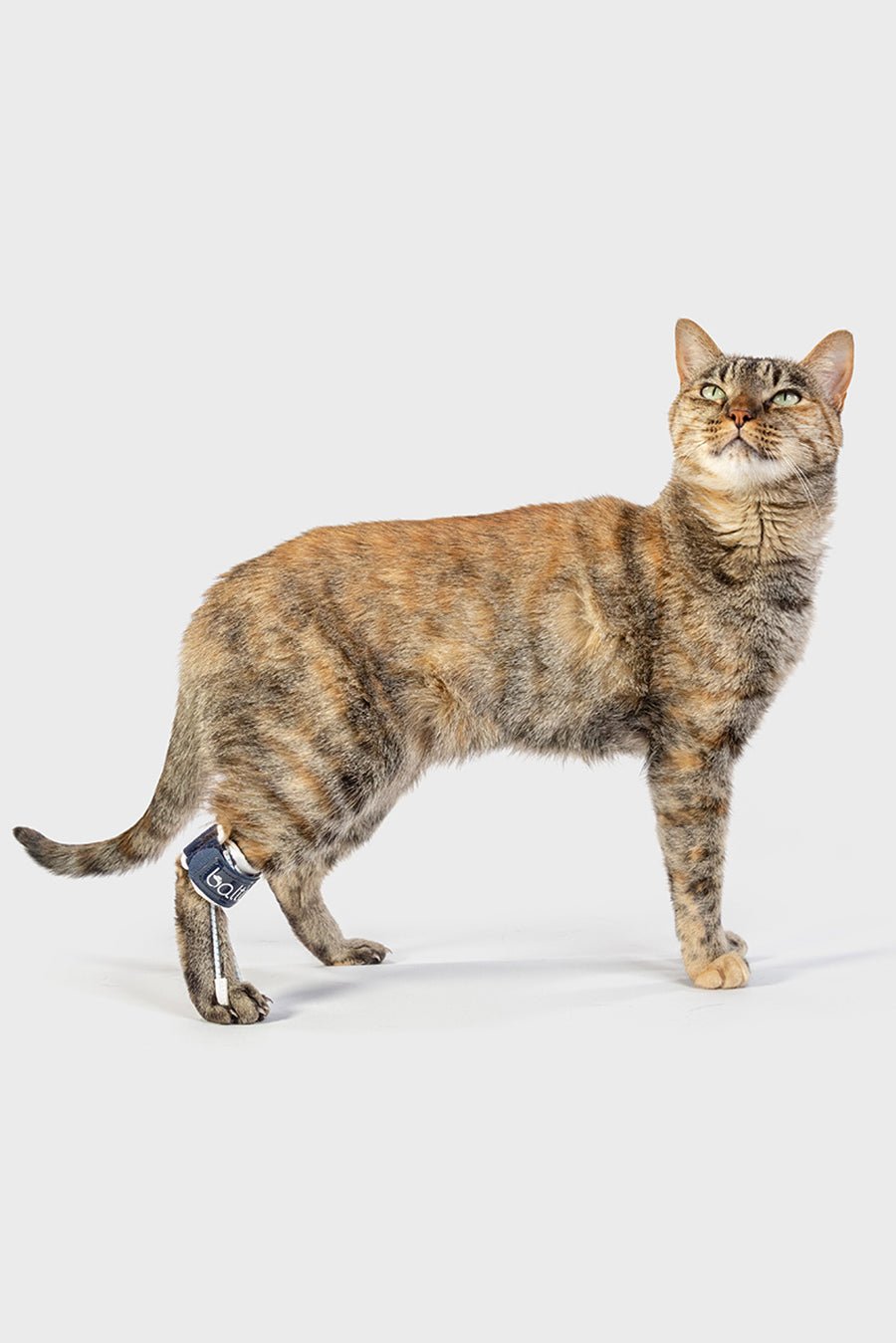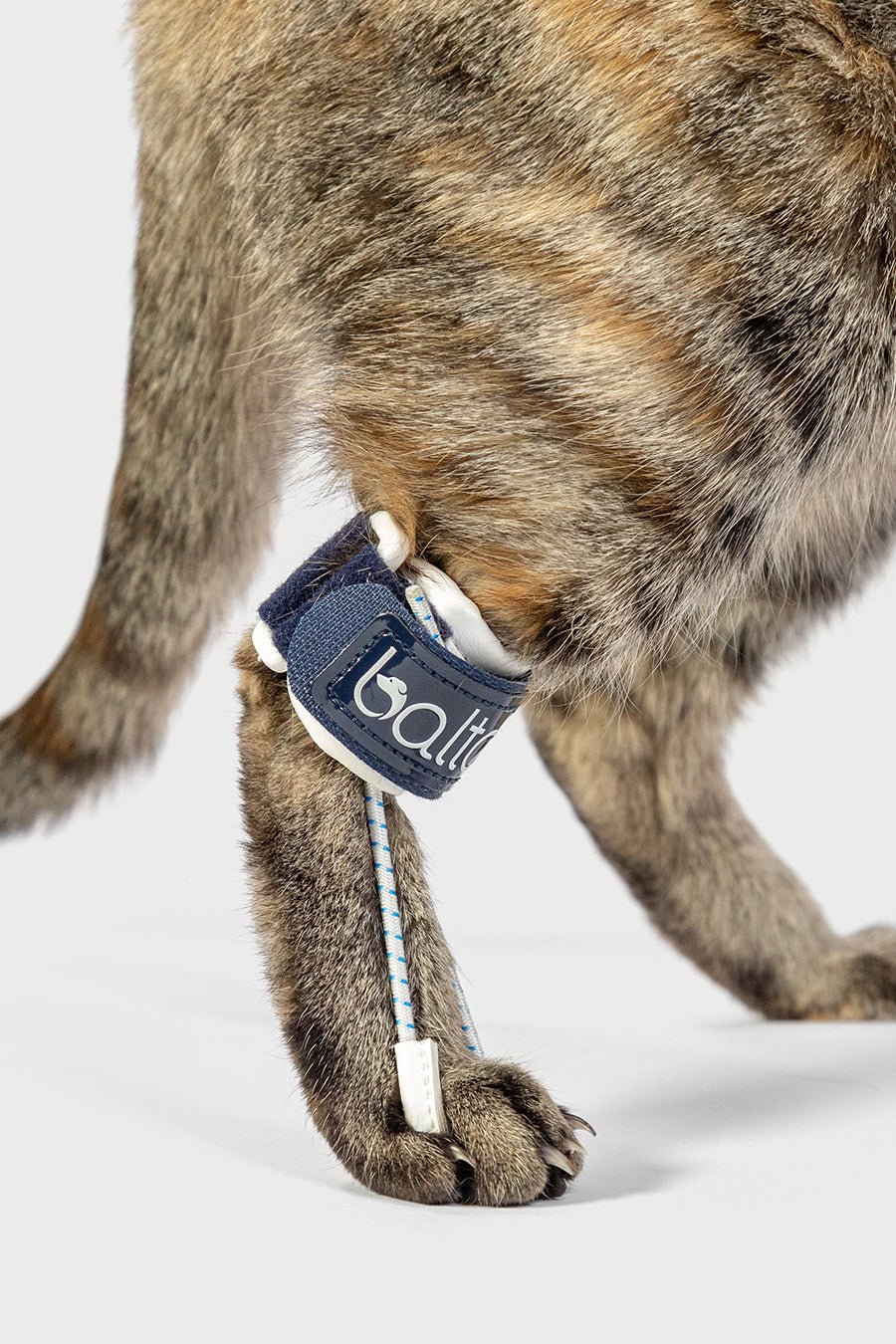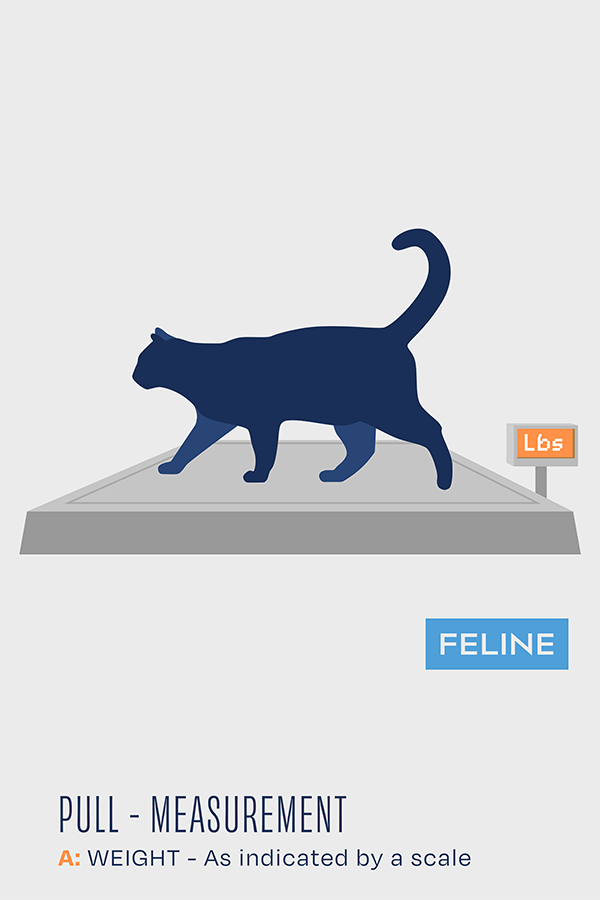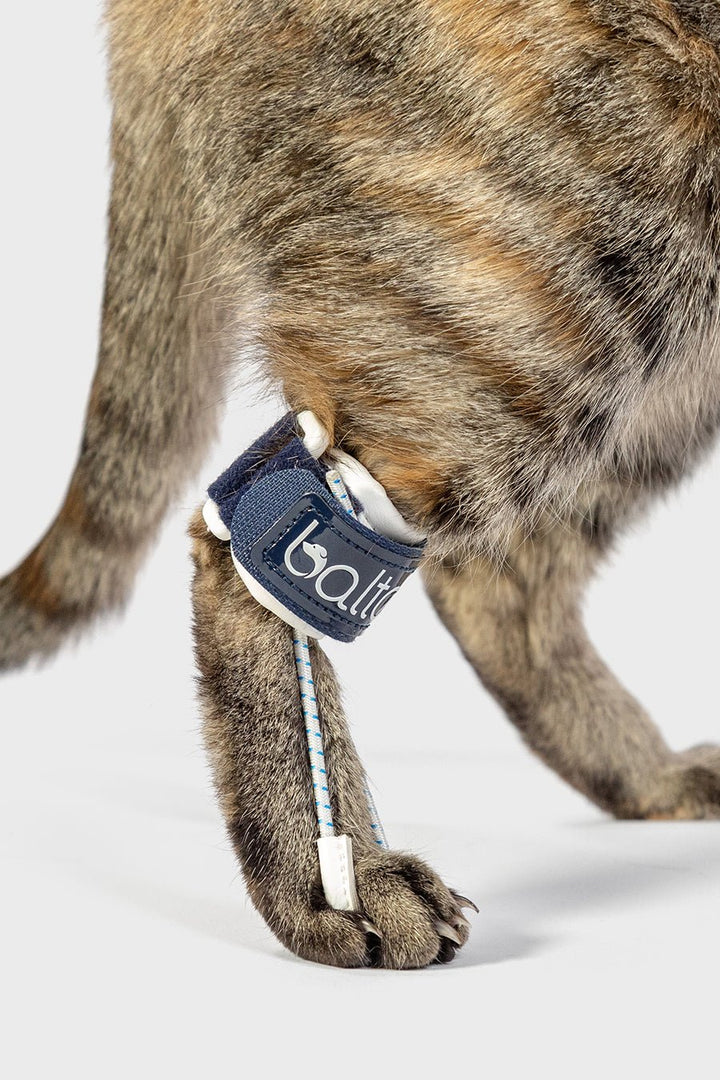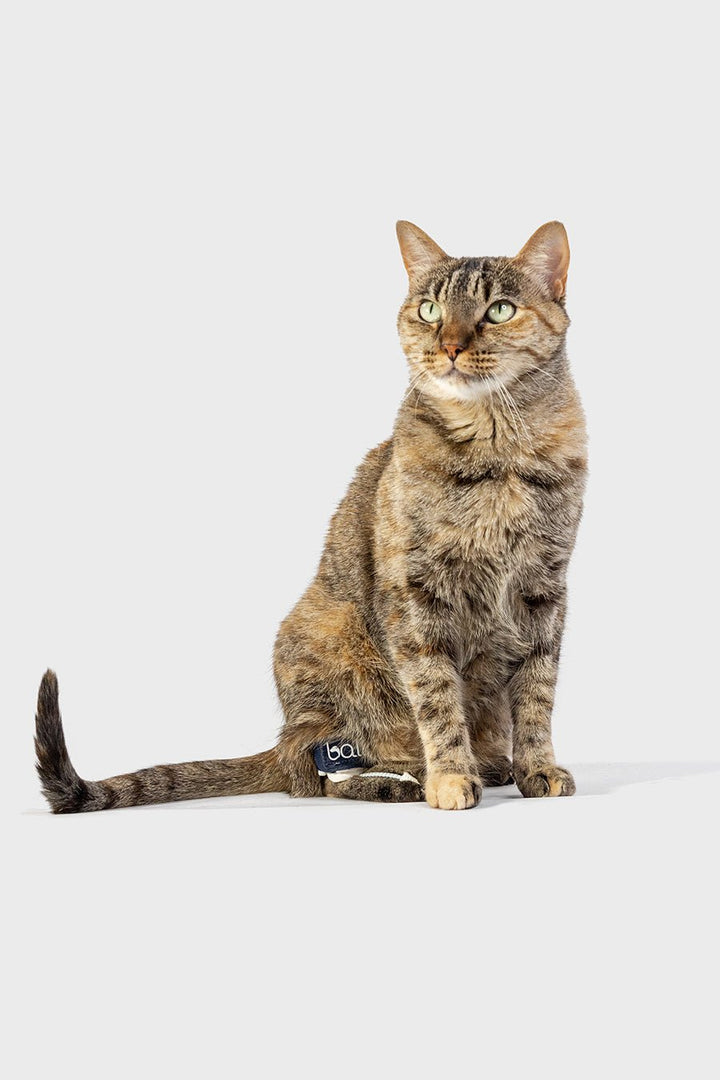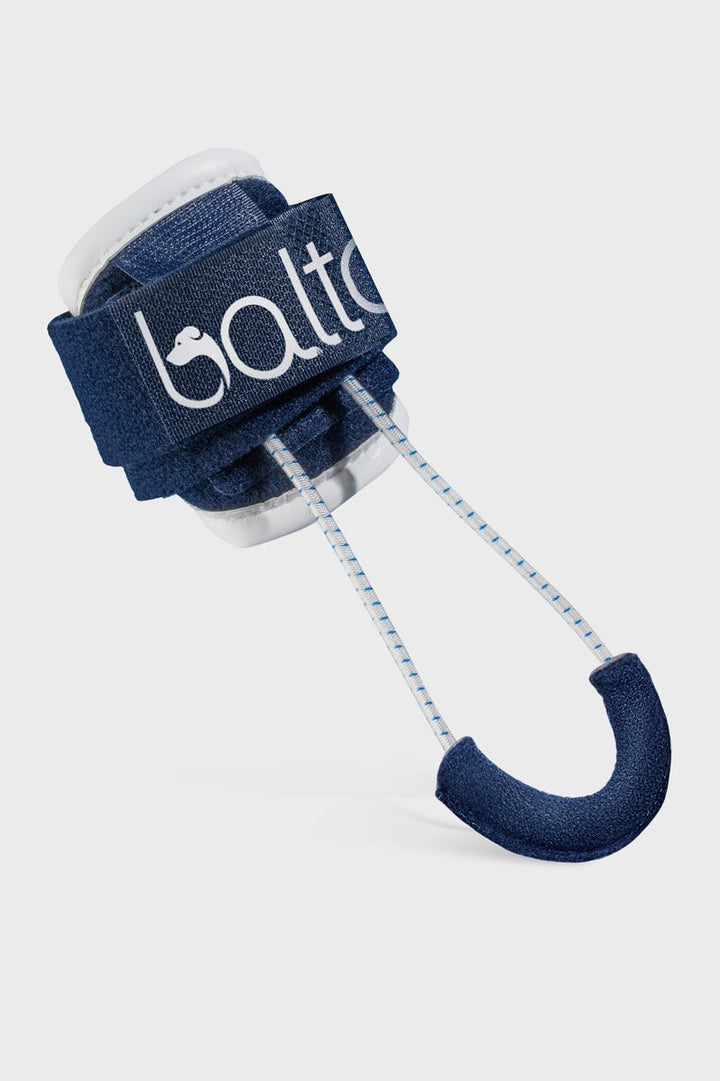The Balto® Pull for felines addresses neurological disorders that cause severe proprioceptive deficits in cats. This feline Achilles tendon brace is a great solution for cats suffering from limited mobility following injuries to the hock/Achilles tendon. This breathable anchor strap, made with non-neoprene material, provides stability and support to your cat’s rear legs without compromising natural movement.
Brace Applications:- Dorsiflexion - when the cat is unable to sense the position of the limb on the ground and tends to stand on the top of its paw
- Damage to the sciatic nerve because of a fracture of the pelvis or femur; in order to ensure that the neurological problem does not lead to orthopedic damage due to shortening of the flexor tendons of the paw.
- Support neurological complications that affect the paw.
- Commonly used in combination with the Balto Hock Feline Brace for hock-to-paw support, actin to pull the canine toe up.
- Two toe bands provided with brace: one soft fitting for long-term and indoor use, and a harder fitting ideal for the outdoors and while using scratch pads.
- Adjustable upper straps can be adjusted on the leg to ensure an excellent fit
Comes in size xxs and xs for felines. To find the best size for your cat, visit the sizing chart here.
All Balto® braces are made from high-quality materials, not neoprene - which has been known to collect bacteria, provide inadequate support, and wear down quickly. A variety of sizes ensure a secure fit. No pinching straps.
For indoor-outdoor cats, please remove the brace prior to going outside. Okay for use outdoors when supervised.
Recommended for all ages unless otherwise advised by veterinarians. Apply brace for balanced increments of time, if appropriate, for pets under the age of 2 to prevent possible growth disturbances.
How to Apply Brace
Step 1
Adjust the length of the elastic strap as needed. Tie a knot in the top of the elastic strap once it is at an appropriate length (Fig. 1 - 3).


Step 2
Position the brace above the dog's hock (tarsus) (Fig. 4).
Step 3
Secure the Velcro strap above the dog's hock (tarsus). Secure the elastic strap underneath the dog's foot and position the padded portion of the elastic strap between the two, middle phalanges (Fig. 5 & 6).

- If my cat is indoors, do I need the toe band with the plastic casing?
- Nope! You can hold the extra piece for safe keeping if needed later.
- How much tension should the elastic toe band have?
- Just enough to wear it lifts the toes (and toenails) up. You don’t want too much tension as to where this can cause discomfort.
- How long should my cat be wearing the brace?
- When introducing the brace, we recommend starting off with 30 minutes then increasing each day after by 30-minute increments. The brace should not be worn for more than 12 hours at a time unless otherwise instructed by your veterinarian.
- Should my outdoor cat be unsupervised in the brace?
- It is recommended to only have your outdoor cat wear the brace while you can see them. The outdoors have several other safety factors, and it can be more harmful to the cat to keep it on unsupervised vs taking it off while they roam.
- Allow up to two weeks for your pet to fully accept the brace
- Wear the brace for 30 minutes a day, increasing 30 minutes each day after, for up to 12 hours
- Consult your veterinarian for specific instructions on when to wear your brace
- Remove the brace when your animal sleeps at night
- Inspect your pet for signs of skin irritation. If any are present, contact your veterinarian
- In addition to wiping the brace clean, keep skin and fur that comes into contact with the brace clean
- Inspect your brace regularly for any damage
A clean brace not only prevents infections, irritation, and a stinky smell; but it also allows your brace to last longer. To help support the longevity of your bracing device, here are some of our tips on how to properly clean your orthopedic bracing:
- Remove as much hair as possible from any Velcro® frequently to prevent compaction.
- Use lint roller or lightly adhesive tape to remove hair from the material of the brace.
- By hand, use warm water and a gentle cleansing soap to remove any stains and odors.
- Rinse soap thoroughly from the brace
- Hang to dry. Once the brace is completely dry, it is ready for use!
How Do we Stack Up?
US vs THEM
| Many Sizes Available | Non-NeopreneMaterial | Stabilization Splints | Irritation resistant Clasps | |
 |
✓ | ✓ | ✓ | ✓ |
|---|---|---|---|---|
 |
✗ | ✗ | ✓ | ✗ |
 |
✗ | ✗ | ✗ | ✓ |
 |
✓ | ✗ | ✓ | ✗ |
 |
✓ | ✓ | ✗ | ✗ |
 |
✓ | ✗ | ✓ | ✗ |

| ✓ | ✗ | ✗ | ✗ |
See if your pet insurance will cover a prescription for Balto®
Learn MoreSize Chart
| SIZE | SKU | WEIGHT |
|---|---|---|
| XX-Small | BTPULLXXS | 5 - 10 lbs |
| X-Small | BTPULLXS | 10 - 20 lbs |
| SIZE | SKU | WEIGHT |
|---|---|---|
| XX-Small | BTPULLXXS | 2-5 kg |
| X-Small | BTPULLXS | 5-9 kg |
Instructions for Use
Step 1
Adjust the length of the elastic strap as needed. Tie a knot in the top of the elastic strap once it is at an appropriate length (Fig. 1 - 3).


Step 2
Position the brace above the dog's hock (tarsus) (Fig. 4).
Step 3
Secure the Velcro strap above the dog's hock (tarsus). Secure the elastic strap underneath the dog's foot and position the padded portion of the elastic strap between the two, middle phalanges (Fig. 5 & 6).


